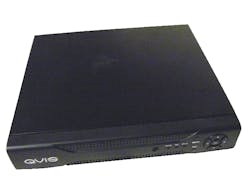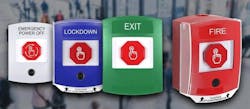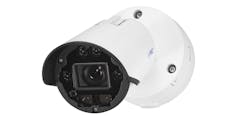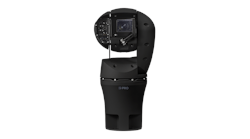Qvis: Entry-Level Video Surveillance
Most locksmiths are always on the lookout for new products and better prices, so we can bring better value to our customers and remain competitive in an economic environment which could be described as challenging. Qvis Labs is one such new video surveillance product manufacturer and research and development center for security products.
In this continually evolving sector, technology is of the utmost importance and Qvis prides itself at being on the cutting edge of the continually evolving video surveillance sector. By obtaining products directly from their website, the locksmith can benefit from dealer direct pricing, and an impressive selection of technology. This selection allows the locksmith to bring value to the customer with products which best meet their requirements and price point.
Qvis products include:
- Analog DVRs
- Hybrid DVRs
- IP NVRs
- Analog Cameras
- IP Cameras
- Cable
- Baluns
- Connectors
- Test Equipment
- Storage Arrays
Products are classified Consumer, Professional and Enterprise class, and QVIS has products that range from simple four-channel DVRs up to RAID 10 arrays. If you are new to video, they offer startup kits, and email newsletters with weekly specials.
Installer Emergency Kit
“We currently have two packages, including the Installer Emergency Kit for $199. It is designed so that the installer has a back up of everything he needs on an install,” explains account representative Krystal Hightower.
The Installer Emergency Kit has the following items:
1 500-foot roll of RG59n cable
1 Zeus Lite four-channel DVR with no hard drive
2 EYE-600-FW-N Fixed lens 600 TVL domes
1 Four-way power supply
2 sets of baluns (power and video)
25 Female DC connectors
25 -Male DC connectors
50 BNCs
“It is everything you need to do an install. All of our DVR manuals and the remote viewing software is available for download from our website,” Ms. Hightower added.
First-Time Customer Package
Qvis also offers a first-time customer package of the same DVR and one of the same cameras for $69.
“It is for customers to try out and has a 30 day money back guarantee. We occasionally do bundle promos of a DVR and the same number of cameras for a special price, but we do not have one of those currently,” saya Ms. Hightower .
I got my Installer Emergency Kit, and ordered a WD-AV hard drive from Newegg, website www.newegg.com.
WD AV drives are a good choice for always-on 24/7 AV applications. They are designed for media center, media server, surveillance, digital signage and other AV systems requiring perfect audio and video, low heat, low power and long-term reliability.
Installing the hard drive was easy, and the DVR and its Graphical User Interface (GUI) were right in line with other products in this class I’ve reviewed and installed. If you are new to video and are feeling unsteady about handling the equipment and programming, either the Installer Emergency Kit or the First Time Customer Package would be a good sandbox for you to play in to gain familiarity with DVRS, cameras, remote viewing, etc.
QVIS ZEUS Lite 4 Channel DVR features include:
- Four-channel video inputs and four Simultaneous playback
- Four-channel full D1 realtime recording (4 Ch Only)
- Up to four cameras with SXGA(1280×1024) display
- Smart video detection: MD, camera blank, video loss
- Multi-languages & Plug-and-play external network access
- Mobile control and monitoring features via Smart phones
- H.264 dual-stream video compression & VGA / TV synchronous video output
- Pentaplex function giving live recording, playback, backup & remote access
- Supports IE and client, remote parameter setting, download video data
- Support 1 SATA HDD
QVIS EYE-600-FW-N CAMERA features include:
- Indoor/Outdoor
- Auto White Balance
- Color/Mono
- Armored Housing
- 3-Axis Gimble
- Dual ring design (No IR reflection)
- Screw base, simple install
- Day and Night
- Privacy Masking
- IR Cut filter
Specifications are:
Pick-up Device: Integrated CMOS Sensor
Effective : NTSC: 510x492
Effective Pixels: PAL: 500x582
Resolution: 600TVL
Min.illumination: 0Lux (IR on)
Sync system: Internal
S/N Ratio: More than 48dB
Electronic Shutter: Auto (NTSC: 1/60 ~ 1/100,000sec,
PAL: 1/50 ~ 1/100,000sec)
Lens: 3.6mm M12 lens / 2.8mm lens optional
IR Distance: 20~25m (IR leds:24xΦ5)
White Balance: Auto
AGC: Auto
Day&Night: Auto
Gamma: 0.45
Video Output: 1.0Vp-p Composite Video Output, 75 Ohm
Power Supply: DC12V± 10%
Power Consumption (Max): 100mA, 250mA (IR ON)
For more information, visit www.qvislabs.com.
VIDEO TECHNOLOGY GLOSSARY & PRIMER
Video Cable Types: A good connection between the camera and the DVR is an essential step towards achieving the best possible image. The proper gauge and type of wire is required so your installation is consistent with the building codes. If you are using analog cameras, then you will use either Siamese cable or UTP.
These days, for commercial jobs we use only plenum rated cable because we are sure that it will meet with the LAHJ or Building department’s approval. Siamese cable is two separate cables bonded together to make it easier to handle during installation; an RG59 coax bonded to a 2 conductor (pair of) #18 gauge stranded wires. The other choice is using UTP also known as Category 5 or better network cable. There are other types of UTP you can use, but network cable is very inexpensive, and has four pairs in the jacket, so you have enough conductors for both the video signal as well as power for the camera. Also you can use the same cable if the customer wants to transition to an IP camera.
PLENUM cable must be used in many commercial environments and always if your cable is to be installed in areas referred to as plenums which are used to move air as part of the heating and cooling system.
RISER is the other type of cable, typically used for all other areas including for running between floors. (plenum can be used anywhere)
Direct Burial: Often when it is necessary to run wire between buildings under ground, it may make sense to simply drop the cable into the trench and fill the hole back in. Video cabling is low voltage, so conduit is not required for safety, although you may wish to use conduit (metal or plastic) to protect the cable from damage.
UV Resistant: If your cable is going to span across buildings overhead, or be otherwise exposed to the great outdoors, then use wire that is designed for this exposure otherwise the wire jacket will dry out, crack, moisture will get in and seep along the wires and will cause you grief or have a negative effect on the performance of the video surveillance system.
RG Cable: RG-59 copper conductor and copper shield is the most commonly used cable, and is available in plenum and non-plenum. RG 59 is acceptable for cable runs up to 750 feet. RG-6 has a larger diameter center conductor, has lower resistance than RG-59, and is recommended for cable runs up to 1,000 feet. RG-11 is heavier and recommended for use on cables up to 1500 feet. (I personally never have used RG-11)
CAT-5e (Cat 6) UTP a/k/a UnTwisted Pair is an alternative to coax and is less expensive than coax and easier to install. It is also suitable for extended cable lengths, and there are midspan devices which will allow even longer runs.
When UTP is used for analog camera cable runs impedance matching transformers called baluns must be used. Baluns are available in a wide assortment of designs.
When pricing out your projects it will become apparent that the money you save on the network cable you give back with the additional cost of the baluns. But the network cable is so much easier to install, and for long cable runs your costs even out.
The baluns provided in the QVIS kit enable the video as well as the power to be sent down the cable. The industry has pretty much transitioned over from Cat 5e to Cat 6. The pricing and performance of Category 6 may make mores sense to you. When using UTP, it will be necessary to attach connectors onto the ends of the cables. You will need the connectors and a tool to do this. Please note that the connectors used for Cat 5 are different than those used for Cat 6, and if you get them mixed up, you or your installers will have problems attaching the connectors.
You might also consider getting a cable tester so you can verify that you have installed the connectors properly. Miswires on the cables will cost you time troubleshooting problems, and possibly damage a camera or a power supply.
Basic Steps To Achieve A Clear Image
- Position the camera to protect the lens, as much as possible, from interference from direct sunlight, sources of artifical light or physical contact with other objects.
- Securely mount the camera.
- Adjust focal length to frame scene.
- Focus.
- Use the appropriate cable.
- Run cables to avoid noise.
- Use the correct power source.
- Confirm the camera is receiving adequate voltage.
The math associated with camera resolution and the quality of the viewed image and recorded video, is somewhat complicated. The variables associated with achieving the best image possible is a balance between the following factors:
- Setting the camera to achieve the optimal view
- Supplying the correct power to camera
- Being sure the connectors for power and video are correctly installed
- Selecting the correct frame rate and image quality in the DVR
- Explaining the trade-offs to the customer so they make the right choices when accepting your proposal.
It seems the biggest shock occurs when the customer comes to the realization that the quality of the recorded video is not a good as the live view video. Also the quality of the remotely viewed video may also not meet their expectations.
Usually you can get the camera to produce a pretty good image on the live view monitor. However once the image is digitized and piped through the network and the Internet, degradation is bound to occur. You as the installer have control over the specifications of the DVR and its performance capabilities; the power supplies and cabling used.
You have less control over the network environment, the Internet, and the computers and other devices the customer wants to use with the video surveillance system.
Tim O'Leary
Tim O'Leary is a security consultant, trainer and technician who has also been writing articles on all areas of locksmithing & physical security for many years.






